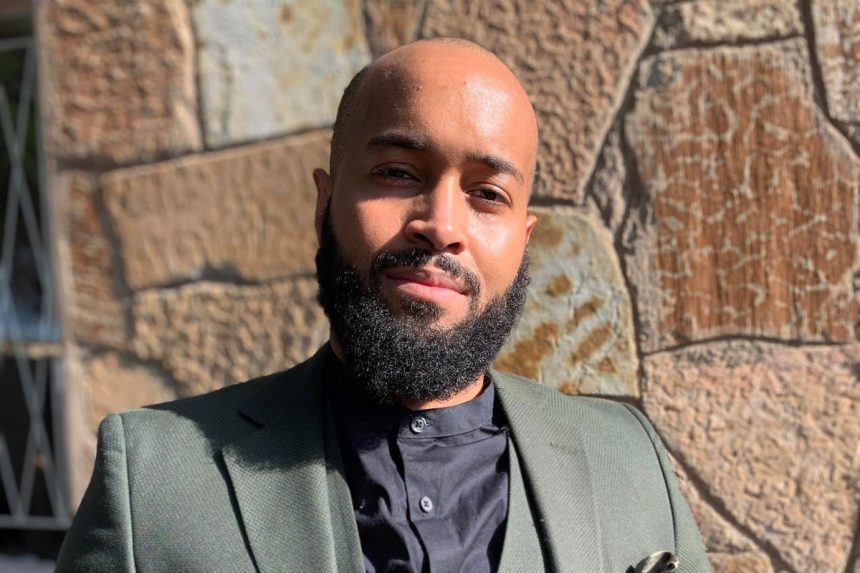Equity plays a key role in shaping company culture, enhancing innovation, and ensuring an organization’s sustainability in a dynamic socio-political environment. Regrettably, despite being a crucial factor, companies struggle to address and solve equity issues effectively. In conversation with Dr. Pierce Otlhogile-Gordon, we explore four organizational behaviors and habits that stall progress and the path forward.
Dr. Otlhogile-Gordon defines equity as fairness across differences.
Equity signifies that employees’ contributions are recognized, their voices are heard and their diverse perspectives are valued. It also ensures that opportunities for growth, development, and advancement are made available to all, irrespective of their background or identity. When employees observe that their organization is committed to equity, it cultivates trust, reinforces the perception of organizational justice, and encourages loyalty.
However, in a singular quest for increasing representation, most organizations have failed to make meaningful progress in advancing equity even the best efforts to recruit and hire a more diverse workforce fail at retaining employees with marginalized and underrepresented identities.
1. Failure to Diagnose Underlying Issues
Like diets, most mass-produced approaches to DEI ultimately don’t work and often cause more harm in the long run.
Here’s why.
Every organization’s employee base, organizational structure, resources, and vision is unique. To their detriment, , only 37% of companies, primarily large-cap, reported taking any action to diagnose their equity and diversity issues according to McKinsey. An alarming majority are unprepared to address systemic inequities effectively, as few have a culture of measuring their current state of DEI programs and culture. Without an accurate diagnosis, organizations are ill-equipped to design and implement a comprehensive equity strategy.
The first DEI investment, like a doctor with patients, needs to be in diagnosing the problem. What is the state of resourcing, recruitment, advocacy, and culture inside your organization? What are the leverage points & people? What are the barriers? What about the non-negotiables?
Dr. Otlhogile-Gordon says, “Inequity is embedded into the fabric of our society – sometimes so deep, that it requires different scopes, technologies, stakeholder relationships, and positionalities to even put the puzzle pieces together. If you’re to build the right solutions to the problems, you have to have the tools to determine the real issue, convincingly present your insights, and determine the best path forward”.
When leaders build DEI strategies based on gut instincts and in-vogue solutions, , such as unconscious bias training and inclusion surveys, they neglect to address issues that are relevant to their organization, communities, and stakeholder groups.
The most impactful DEI efforts address where equity intersects with core policies, processes, and functions within an organization. For instance, let’s explore one facet of equity, as it cuts across the employee lifecycle in several significant ways.
Dr. Otlhogile-Gordon shares that practices designed with an equity lens consider recruitment and hiring processes, ensuring that opportunities are open to all qualified candidates, without bias or discrimination. During onboarding, they demand equitable treatment to help new hires feel welcome and valued. Later in the pipeline, equity manifests in fair access to training, mentorship, and opportunities for career advancement. In the performance evaluation and compensation process, equity ensures that rewards and recognition are fairly distributed based on merit. In the offboarding phase, equity ensures that exits, whether voluntary or involuntary, are handled fairly and with dignity.
2. Ineffectual Solutions
When it comes to solutions, most organizations believe training is the only solution.
Dr. Otlhogile-Gordon says he has, “seen countless uncoscious bias trainings just like this: held with large groups, focused on single themes, with little participation, and focused on performance over accountability. This quick-fix solution rarely works”.
An extensive study found that diversity training programs had “no positive effects in the average workplace” and in many instances made things worse (Harvard Business Review). Learning and development is important, but rarely sufficient on its own.
Building the right solutions requires a deep understanding of the organization’s specific issues, along with a comprehensive, multi-faceted approach. Companies need to redesign processes, policies, and systems that unintentionally perpetuate inequities using righly-aligned solutions, and then provide the necessary education and training to support these changes.
Dr. Gordon says “To make demonstrable progress in your social change work, you need to have three things: knowing the kind of world (or organization) you want to build, knowing what skills you can cultivate, and knowing what principles you hold dear when things get messy”.
He recommends all organizations start with auditing and redesigning processes, policies, and systems that unintentionally perpetuate inequities – and then – provide the unique skill-building resources to support these changes.
3. The Absence of Relationship-based Approaches
The next mistake organizations make: they forget the relationships that build a successful DEI culture.
“We never know how our small activities will affect others through the invisible fabric of our connectedness. In this exquisitely connected world, it’s never a question of ‘critical mass.’ It’s always about critical connections.” – Grace Lee Boggs
In order to create an environment that truly promotes equity, the work must be rooted in relationships. Yet, many organizations fail to foster these relationships, resulting in a lack of trust and collaboration that can stifle any equity efforts. While 84% of CHROs claim investment in DEI, only 31% of employees say their organization is committed to improving racial justice or equality in their workplace, according to a Harvard Business Report article. PWC’s research indicated that 38% of employees believe that their organization’s diversity and inclusion initiatives are for optics rather than genuine change. This perception is often a result of not involving employees in the process of creating equity strategies and not fostering a culture that values open dialogue and collaboration.
Dr. Otlhogile-Gordon says, “Change requires engaging with the core elements of society, and how an issue affects them: the people and relationships in a society. Therefore, learning how people engage with the issue: support or undermine, pivotal or diffuse, will ensure you build a strategy that builds a DEI culture that sustains itself.
Core to making progress on equity outcomes are relationships grounded in candor, curiosity, and kindness. What does this look like? Instead of building a company that coerces employee surveillance and collecting employee sentiment data, you can build mechanisms for honest feedback and accountability: including town halls with executives and decision-makers, designing iterative approaches to building programs focused on employee needs, and taking action on issues important to employees – especially those who have been historically marginalized and underrepresented.
“We are socialized to see what is wrong, missing, off, to tear down the ideas of others and uplift our own. To a certain degree, our entire future may depend on learning to listen, listen without assumptions or defenses,” Adrienne Maree Brown wrote in her book.
A note: listening to employees doesn’t mean making programming decisions based on the voices of a small conservative minority like Google’s recent actions. To Dr. Otlhogile-Gordon’s point, it requires engaging with the issues that affect their lives – and recognizing how each decision affects their lives, inside and outside the company.
4. Leadership Ego
“Ego interrupts Intuition”. – Danielle LaPorte
The Boston Consulting Group was one of the earliest thought leaders to stress how data on employee experience, perception, pay and promotion rates are essential to designing DEI solutions that work. The report states, “Our data shows that most company leaders—primarily white, heterosexual males—still underestimate the challenges diverse employees face. These leaders control budgets and decide which diversity programs to pursue. If they lack a clear understanding of the problem, they can’t design effective solutions.”
Many leaders believe they don’t need needlessly spend on data collection. This is ego in action.
Many leaders’ egos are often the most obstinate hurdle in the way of solving equity issues. Instead of acknowledging their biases, leaders may blame external factors or deny the very existence these type of problems. A study by Cornell University revealed that only 13% of executives believe their companies have a bias in their performance review process, despite clear evidence to the contrary.
Dr. Otlhogile-Gordon states the importance of investing in personal growth and healing for leaders, quoting, “What inequity is systemic, we also replicate inside each of us through our privilege and actions. If you want to build a new world, you must learn how you replicate those traumas in your work and life – so you can stop listening to your ego, and start building healthier, more responsible futures.”
Leaders need to adopt a learning mindset, recognize and address their own biases, and set a positive example for the rest of the organization. Only when leaders accept their limitations and actively engage the role as a change maker can a truly equitable organization take shape.
In conclusion, addressing equity issues within small and mid-sized companies is an ongoing and complex task that requires proactive diagnosis, effective solution-building, relationship cultivation, and ego-checking leadership. By understanding these challenges and working to overcome them, organizations can create a more equitable, innovative, and productive workplace that stands the test of time.
This article is the start of a four part series on addressing critical barriers to advancing equity and inclusion, written with guidance and support from Dr. Pierce Otlhogile-Gordon.
Based in Botswana, Dr. Otlhogile-Gordon serves as an innovation catalyst, researcher, facilitator, and evaluator, deeply impassioned by the intersection of transformation and liberation. With a track record of success, he has developed mixed-method research designs for Fortune 500 Companies and spearheaded design + evaluation strategies for high-value clients. Pierce’s expertise extends to crafting and consulting on social change curricula encompassing design, evaluation, and equity, a journey that has taken him across four continents. Collaborating with international changemakers, he has co-designed equity-driven design products, papers, and services. Notably, his research delves into the intricacies of design and innovation complexity, evaluation, and emergence on a global scale.
Read the full article here









